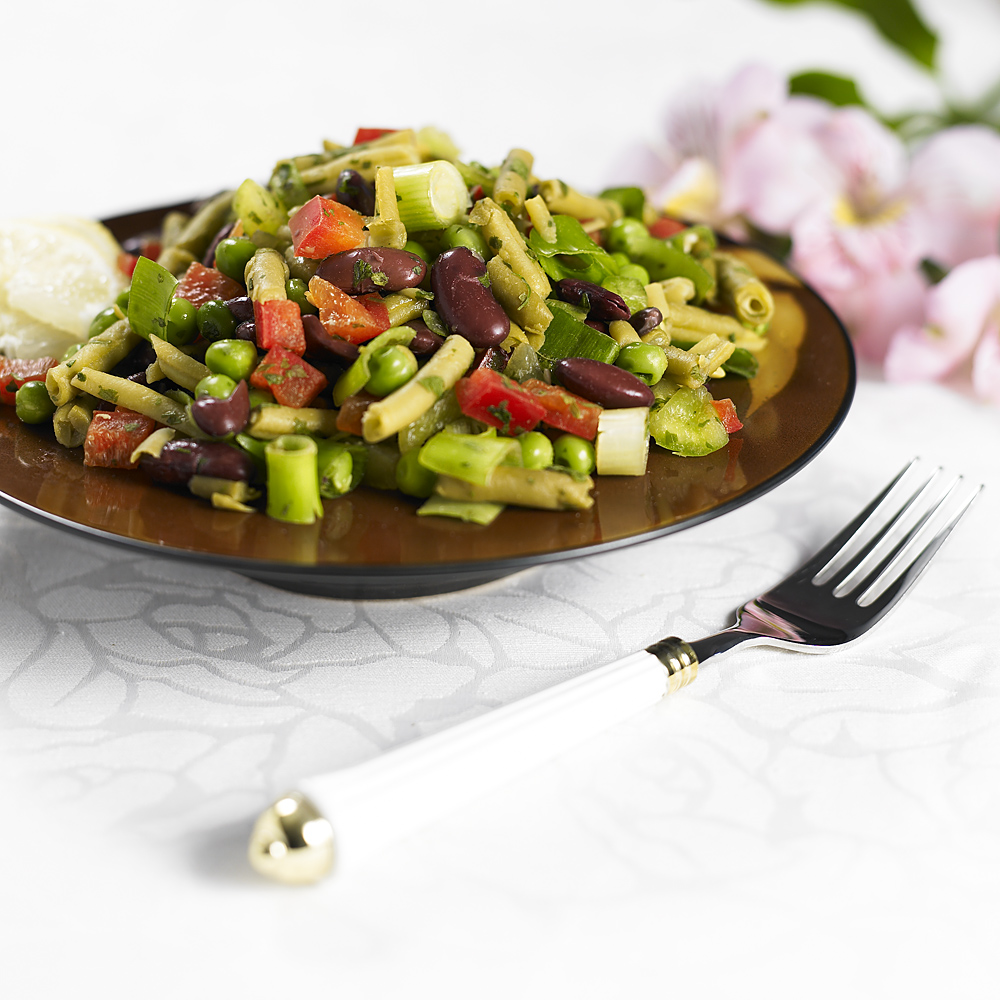This article is part of a series by the Ismaili Nutrition Centre that examines evidence-based studies published in scientific journals, and distills what they mean to our readers.
 Colourful, delicious, and nutritious: pea and bean salad is a great source of fiber and protein, and it makes for a great snack or meal. Olly Roberts
Colourful, delicious, and nutritious: pea and bean salad is a great source of fiber and protein, and it makes for a great snack or meal. Olly RobertsHow many beverages does it take to feel full? What about solid foods?
Although some people believe that all calories are equal, researchers are finding that solid foods have some advantages over fluids. The feeling of fullness is very difficult to measure, or even to understand, as there are many factors involved such as taste, consistency, how long it takes to eat or drink, how much space the food takes up in your stomach, and the effects of the chemical signals that send messages from your stomach to your brain.
Researchers at Bristol University in the United Kingdom found that eating an apple made people feel fuller for a longer time, in comparison with drinking the equivalent number of calories of apple juice. This could be because the solid part of the apple – particularly the amount of time it takes to eat and digest and the amount of space it takes up in your stomach – helps make you feel full for longer, which may in turn help you take in fewer calories later on.
A group of researchers at the University of Toronto looked further into these differences, and published their results in the International Journal of Obesity in April 2011. They found that when people drank high calorie drinks such as iced cappuccinos, sodas, and fruit drinks, they re-consumed two thirds of those calories just an hour later. In practical terms, the research suggests that if you were to drink a 250 calorie drink such as a sweetened milk-based chai, sugar cane juice or sherbat, you could end up taking in an extra 160 calories soon after, because the drink is unlikely to keep you feeling full for very long.
These research findings suggest that if you drink a lot of high calorie beverages, then you could gain weight because you do not compensate for those extra calories by eating less food later.
What this means for you
Sometimes it is hard to know whether you are feeling hungry or thirsty. Any beverage will quench your thirst but not necessarily your hunger, so why choose one that has high calories but doesn't give you the satisfaction of feeling full?
Choose water or unsweetened drinks like herbal tea to quench your thirst. If you are treating yourself to an occasional sugary beverage, choose the smallest serving size available and request zero or low-fat dairy-based drinks rather than those with full-fat or cream. Drink it as a dessert after your meal rather than as a snack, before your meal, or as a drink to go along with your meal.
Other research on satiety (feeling of fullness) conducted in Australia has also shown that if you're feeling hungry, choosing a food with higher protein, fibre, or water content will satisfy you and make you feel full for longer. Choosing fresh oranges or popcorn, which give you some fibre, are great snack options. Try high protein snacks like yoghurt, a ¼ cup of almonds, or a handful of roasted soya beans or chick peas (ideally unsalted).
Some options to consider for making meals more satisfying include choosing pulses like beans, lentils and chickpeas or starting a meal with a hearty vegetable soup or salad. Whole grain pasta and brown rice are also better options which are high in fibre. Start your day with old fashioned porridge or an egg – it will hopefully prevent you from reaching for unhealthy beverages or snacks throughout the day.
References
- Akhavan, T., B.L. Luhovyy, and G.H. Anderson, Effect of drinking compared with eating sugars or whey protein on short-term appetite and food intake. International journal of obesity, 2011. 35(4): p. 562-9.
- S.H.A. Holt, J.C. Brand Miller, P. Petocz, and E. Farmakalidis, A Satiety Index of Common Foods. European Journal of Clinical Nutrition, September 1995, pages 675-690.








